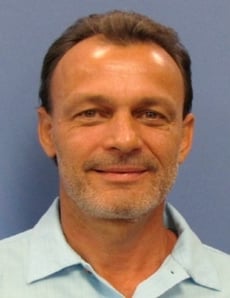 Jean Michel Maillard is a key player on the laser solutions team for VCSEL (Vertical Cavity Surface Emitting Laser) technology and product development. As an optical engineer, his approach to design involves building a trusting partnership with customers to help them reach their technical and cost goals—and it's working well.
Jean Michel Maillard is a key player on the laser solutions team for VCSEL (Vertical Cavity Surface Emitting Laser) technology and product development. As an optical engineer, his approach to design involves building a trusting partnership with customers to help them reach their technical and cost goals—and it's working well.
What's your professional background?
I am an optical engineer with a degree from Ecole Superieure D’Optique in Paris, France and a project management professional with a degree from the Project Management Institute. For more than 30 years, I have been working in start-ups and commercial companies on optical fiber sensors, micro-chip lasers, blue/green lasers, laser RGB micro projectors, and VCSEL.
I have been mainly involved in technologies & product development as principal engineer, technical staff and program manager. For a few years I was a manufacturing engineering manager for a fiber laser company producing high end, single frequency and low noise fiber lasers for the sensing industry. It was a huge learning experience being on the other side of the fence—managing customers and dealing with yield, RMAs and the failure analysis. This helped me to better understand the concept of “design for manufacturing” that I have included since then into all of my development projects.
Why brought you to the team?
I knew that the laser solutions team, formally Lasertel, is a well-established commercial laser company with a strong leadership and talented teams. The development of a new laser product (VCSEL) made me especially excited to join the team. Accustomed to start-ups, I was up to the challenge to bring VCSEL technology to the laser capabilities. After a few years, we are proud to offer these new components to our customers in a variety of configuration to match most of the requirements.
What are the key areas you explore with customers?
Most of our customers are new to the laser world. The first thing is to understand their motivation, then educate them on the desired component’s performance and limitation. We work hand-in-hand to design and build what the customer needs, with emphasis on performance, production cost and reliability. This relationship builds mutual trust and is a very pleasant aspect of what we are doing here.
What are you working on these days?
We have recently demonstrated VCSEL performance for a variety of applications, including automotive LiDAR (light detection and ranging), 3D printing, 3D sensing and structured light. The primary demand of customers is to improve the laser solutions performance and reduce cost. Therefore, the next challenge for us is to increase the emitted power and the luminance. This involves the number of watts emitted per unit area in a given direction (solid angle) with targets at a few kW/cm2 in pulsed mode and ~kW peak power for a given VCSEL emission of 20-25deg divergence cone emission. Our technical roadmap is in line with these goals, so we should be able to provide even more powerful VCSELs soon.
What is the project you're most proud of?
The laser solutions facility, as a vertically integrated manufacturer, has a lot of expertise to offer. I started with the mission of growing the VCSEL activity. Up to today, I am proud of our achievements thus far for the level of performance demonstrated and customer relationships built.
For more on VCSEL technology, download the white paper, “The Race to the Starting Line: Edge-Emitting Diode Lasers vs. VCSELs for the Automotive Lidar Market.”


